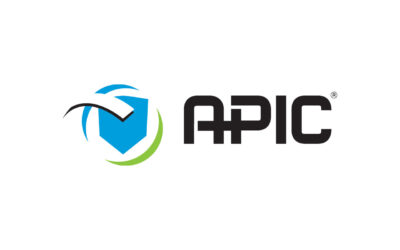
SARS-CoV-2 is a global threat for which the world was unprepared. Xenex Disinfection Services announced today that its LightStrike™ pulsed xenon disinfection robot is the first and only ultraviolet (UV) disinfection technology proven to deactivate the actual SARS-CoV-2 (Severe Acute Respiratory Syndrome coronavirus 2). The LightStrike disinfection robot destroyed SARS-CoV-2, which is the virus that causes COVID-19, in two minutes. Testing was performed at the Texas Biomedical Research Institute, one of the world’s leading independent research institutes working exclusively on infectious diseases.
Surfaces contaminated with SARS-CoV-2 pose a grave threat to the safety of healthcare workers, patients, frontline responders, military service members, cruise line passengers, hotel guests and citizens everywhere. Deactivating the SARS-CoV-2 virus on surfaces is a critical and necessary step to protect people now and in the future as businesses reopen and people get back to work. Hospitals, medical office buildings, hotels, offices, gyms, and many other spaces can benefit immediately from LightStrike disinfection as the global pandemic demonstrates the need for quick and effective disinfection wherever people work, play, or live.
Xenex Germ-Zapping Robots™ use a xenon lamp to generate bursts of high intensity, full germicidal spectrum (200-315nm) UVC light that’s more intense than sunlight. Different pathogens are susceptible to UVC light at different wavelengths. With full germicidal spectrum light, Xenex LightStrike robots quickly deactivate viruses, bacteria and spores where they are most vulnerable without damaging hospital materials or equipment.
Xenex validated the efficacy of the LightStrike disinfection robot against live (not surrogate) SARS-CoV-2 in the biosafety level 4 (BSL-4) containment laboratory at Texas Biomedical Research Institute. Testing was also performed to measure decontamination of N95 respirator masks, as a result of healthcare facilities being forced to reuse personal protective equipment (PPE), and the robot achieved a 99.99% level of disinfection. Designed for maximum containment, BSL-4 labs offer a safe environment for scientists to study deadly pathogens for which there are no known treatments or vaccines. While SARS-CoV-2 is considered a BSL-3 level pathogen, Texas Biomed has both BSL-3 and BSL-4 resources and is able to utilize both in the study of COVID-19. Texas Biomed is home to one of fewer than 10 BSL-4 labs in North America and the only privately owned one. The Institute has both the expertise and resources to test against these pathogens. In 2015, also at Texas Biomed, Xenex proved the ability of the LightStrike robot to destroy the Ebola virus in 1 minute.
“COVID-19 caused the world to stop in its tracks. As we discuss and plan for re-entry, disinfection of public spaces is a major priority to reduce the risk of disease transmission. Putting an effective infection prevention infrastructure in place now is essential,” said Dr. Mark Stibich, Chief Scientific Officer and co-founder of Xenex. “Our robots have been adopted as the environmental standard of care by many of the world’s leading hospitals because they work — and they work very quickly. As an evidence-based company, we turned to Texas Biomed to evaluate the efficacy of pulsed xenon UV against SARS-CoV-2 because we wanted our current and future customers to know with certainty that their pulsed xenon UV robots could stop COVID-19.”
Xenex is the world leader in UV disinfection for healthcare facilities and its LightStrike robots have been deployed in more than 500 healthcare facilities around the world, including HonorHealth, the Mayo Clinic, MD Anderson Cancer Center, Stanford, and USC. The robots work quickly and do not require warm-up or cool-down time, so facilities are able to disinfect dozens of rooms per day (per robot). Hospitals have published peer-reviewed studies showing significant reductions in Clostridium difficile (C.diff), MRSA, VRE and/or Surgical Site Infection (SSI) rates after integrating Xenex’s infection prevention programs and using LightStrike robots to supplement their environmental disinfection efforts.
“The COVID-19 pandemic has unearthed distinct scientific challenges, one of which is the ability to quickly engage in partnerships for the sake of moving technologies, therapies and vaccines to market quickly,” said Dr. Larry Schlesinger, President & CEO and Professor at Texas Biomed. “Texas Biomed is a unique nonprofit that has the expertise, the technology and the business model to support contract research in addition to independent research that expedites the discovery process and helps companies like Xenex see results.”









